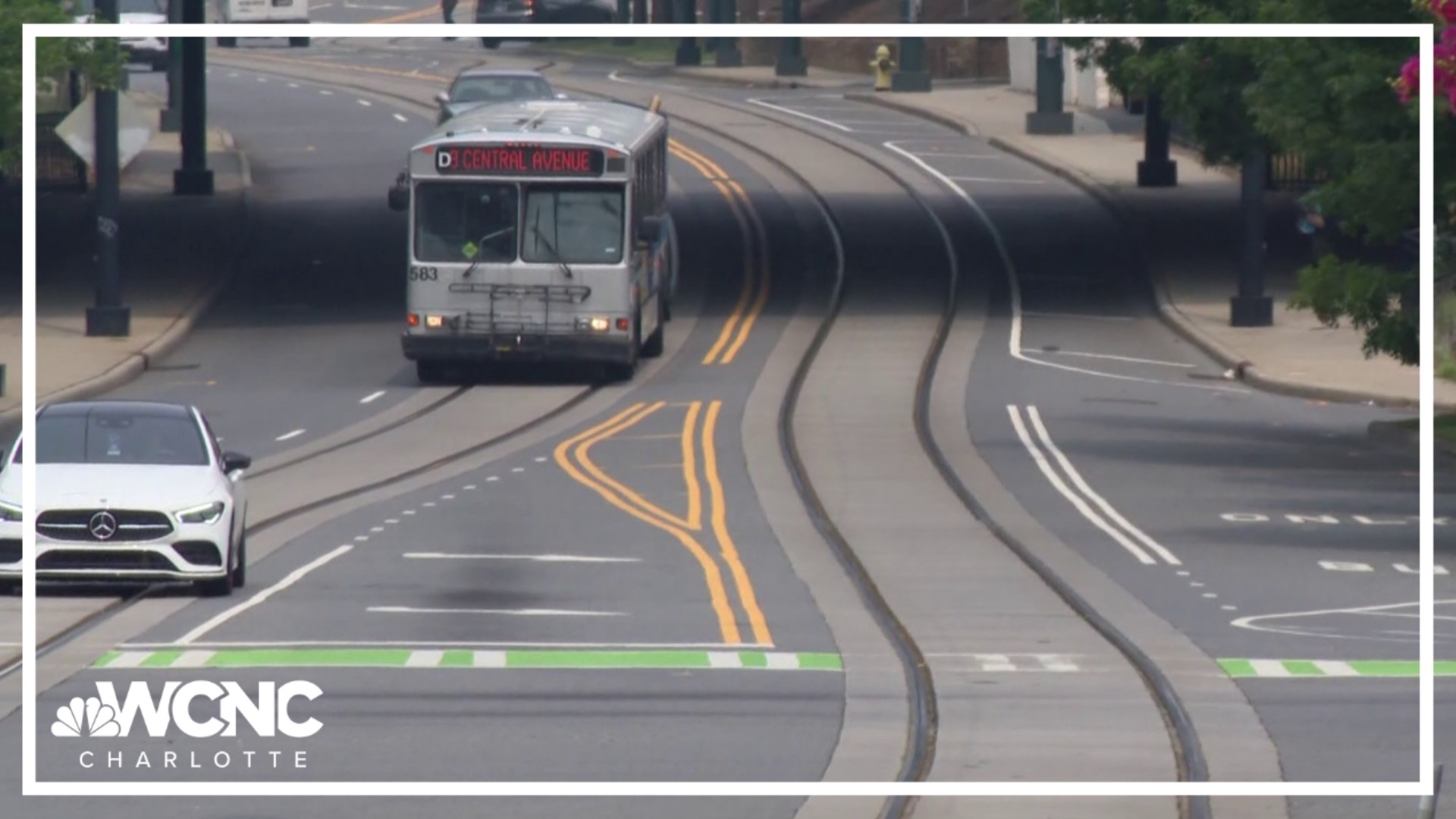CHARLOTTE, N.C. — It’s estimated that 100 people move to the Charlotte area every day. If you’ve driven in the area, you know it can sometimes take a long time to get around. That's why improving how people travel in the region is a big priority for transportation leaders.
It was top of mind for several industry experts who came together at the Regional Transportation Summit on Monday.
They addressed the current state of transportation and mobility in the Queen City. Industry experts also looked at what the future of transportation in Charlotte could look like.
City of Charlotte Mayor Vi Lyles took the stand and said having a robust and strong transportation system is a major part of improving the quality of life for everyone who works and lives here.
“If we want to have a city that values everyone, that allows for upward mobility then we need a transportation plan, a mobility plan that allows people to get to work, and home to work,” Lyles said.
Charlotte city leaders talked about CONNECT Beyond, a regional mobility plan spanning across counties which brings together investments in roads, bikes, sidewalks, rails, and greenways.
Industry experts emphasized the need for an efficient transportation system, a mobility network, and the infrastructure to support the expected population growth.
That comes in many facets.
“What would our city look like if 50% of our trips were made by cars and we had the opportunity, the capacity to provide other ways for people to move,” Ed McKinney with the Charlotte Department of Transportation (CDOT) said. “That would unlock a tremendous amount of capacity in our system without having to build new infrastructure.”
Charlotte Area Transit System (CATS) shared more on the importance of stabilizing its workforce and providing reliable public transportation as it looks to expand the rail and bus lines.
“We are also looking at the red line and looking at the conversations with communities north of Charlotte -- Huntersville, Cornelius, Davidson and Mooresville -- as we update the design of the Lynx Red Line to be ready for future conversation to be able to deliver on that project,” Jason Lawrence with CATS said.
There were also discussions about the push for electric vehicles and making them more accessible.
The overall idea is to increase the options people have to get around in the city, deal with congestion and essentially have a network that is good for people, businesses, the environment, and is equitable.
Moreover, with plans in place, the focus turns to the need for funding.
“This region has been operating the bus and rail system with the same one cent sales tax since 1998… our community deserves and needs more,” Lyles said.
“We have got to solve the problem of funding and demonstrate the ability to fund the local portion of projects to be able to access federal funds,” Charlotte City Councilman Ed Driggs said.
There are a lot of projects in the works, and state and federal dollars are much needed.
“One thing I can tell you is there is plenty of money for infrastructure… for the cities and counties that put themselves in the most competitive position,” Congressman Jeff Jackson said.
Transportation leaders said it is also important to bring in regional, corporate and community partners to increase revenue sources to make it all happen. NCDOT Chief Operating Officer Joey Hopkins discussed options involving other funding sources like public-private partnerships or P3s.
“P3s is a way to bring alternative financing, alternative funding in a way to deliver a transportation need today when it could be years and years down the line if we look at other ways to do so,” Hopkins said.
Transportation leaders said investing in the mobility system essentially improves the quality of life for those who work and live in the region.
Contact Jesse Pierre at jpierrepet@wcnc.com or follow her on Facebook, X and Instagram.

